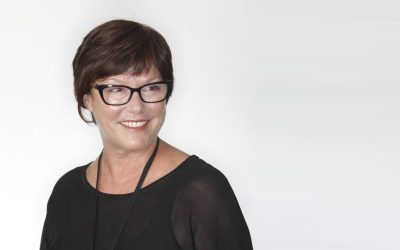Take your first step on the path to financial wellness.
Looking to find out what kind of mortgage you qualify for or how much you can realistically afford on the purchase of your new home? Fill in our easy application form and one of our agents will contact you to discuss the best mortgage option to put you on the path to financial wellness.
Chapter 8 – Successful Retirement Planning
It seems everyone wakes up one day in their early 40’s and they find their heart starts pounding just a bit harder and they start feeling anxious.
Why?
They are starting to get closer to retirement and wonder if they are going to make it a Great Retirement or if they’ll be working until the end.
At The Personal Mortgage Group we only wear one hat and that is the debt management hat. We believe if you manage your debt well you will be able to acquire wealth for your retirement. Of course it’s wonderful to start those saving habits as early as possible because the longer you are saving the greater the compounding of your personal wealth.
TIPS TO INVEST:
1. Never carry debt outside your mortgage. The interest rates are too high and the asset is depreciating at a rapid rate.
2. Do not borrow to invest unless it is from your own home (a capital asset). Your home is almost always appreciating and the interest rate you are paying on it is the lowest you’ll be paying on any major personal debt item.
3. Slow and steady, there is no scheme for investment that works overnight without high risk. Invest in the basics – banks, utilities, communications; things people need to live.
4. Manage your own funds in your RRSPs , TFSA’s and other investments. Try to stay clear of any mutual funds as historically you will retire with the same or less as you put in.
5. Do not start investing until you are running with no debt outside your mortgage. The interest rate on credit cards etc. is so high you will be running a negative.
What will you need to retire?
With a rough calculation if you have no mortgage left to pay you will need a very minimum household income of $65,000 gross a year. This will cover expenses such as utilities, property taxes, car and insurances, food etc.
Your pension is usually 65% of your final years of income. Your CPP is taxable and you can use the government calculator to estimate what you will receive:
https://www.canada.ca/en/services/benefits/publicpensions/cpp.html
The Canadian Old Age Supplement is just that, a supplement for seniors living with below poverty incomes which we will definitely help you try to avoid.
The sooner you start saving, the better your retirement. Based on an 8% annual rate of return here are some modest projections:
1. Early Starters: (for those who starting at 30 years of age and who continue to save up to age 65)
At 30 the start saving $200/month, at 45 years of age they save up to $500/month, and at 56 years of age they put away $1,000/month = $880,000 in savings by age 65.
2. Modest Starters: (for those starting at 45 years of age and who continue to save up to age 65)
At 45 they start to save $500/month, at 55 years of age they begin to save $1000/month until age 65 = $335,000 in savings by age 65.
3. Late Starters: (for those who start saving in their mid-fifties)
At 55 years of age they begin to save $1000/month until age 65 = $180,000 in savings by age 65.
So you see slow and steady takes the cake on this one. Even if the Early Starter had a small amount on their mortgage they would have enough in their investments to eliminate it if they wanted. For example, a $50,000 mortgage at a low rate runs about $200 + per month so it is an easy monthly payment to manage.
RRSP (Registered Retirement Savings)
If you are in a high income bracket and have a spouse in a lower bracket, especially if your spouse is without a pension fund, consider making a spousal contribution so that you can get a tax deduction and your spouse will be able to take out registered funds at a much lower tax rate. RRSPs are a great savings option for those in higher income tax brackets with income to spare.
Starting out, while you are in a lower income bracket, consider putting your saving in to a TFSA (Tax Free Savings Account) instead. You will earn interest tax free and you will have access to your funds anytime you need them. In an RRSP there are penalties for early withdrawl.
https://www.canada.ca/en/services/benefits/publicpensions/cpp.html
TFSA (Tax Free Savings Account)
This is a wonderful tool for everyone to invest with, especially those with a large work pension. The TFSA was started in 2010 and every year there is a cumulative amount added to the maximum amount you can invest (whether you’ve done so yet or not) since the creation of the program. It is just as it sounds, everything you earn in your investments is exempt from income tax. You will be able to use the funds if you wish with no tax implications and put them back in to replenish the funds you removed.
Below is a link to the Government of Canada web site so you will know the guidelines to using this very profitable account correctly:
https://www.canada.ca/en/revenueagency/services/tax/individuals/topics/tax-free-savings-account.html
Remember: Do not just hand over the funds to a bank or mutual funds company. Learn to manage your investments yourself. You can set up your RRSP or TFSA set up online and deposit funds into it yourself, buying your own stocks and watch them grow.




